Coarse Rods
Categories
-
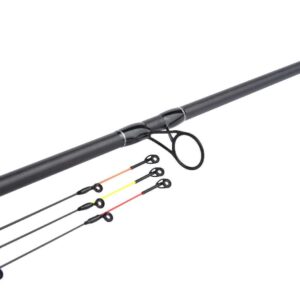
Nytro Marvelist Carp Rods
£99.95 – £119.95 -
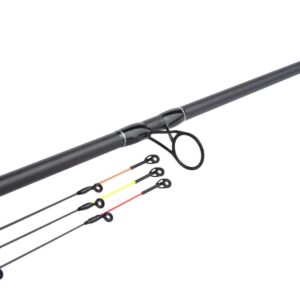
Nytro Marvelist Light Carp Rods
£99.95 – £119.95 -
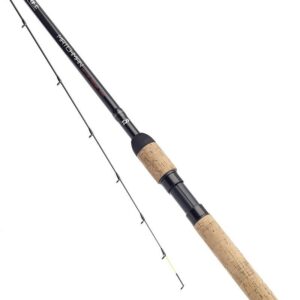
Daiwa Matchman Combo 3
£84.99 -
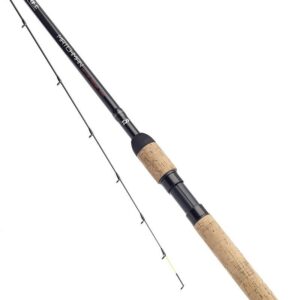
Daiwa Matchman 9ft feeder rod with 2500 matchman reel
£84.99 -
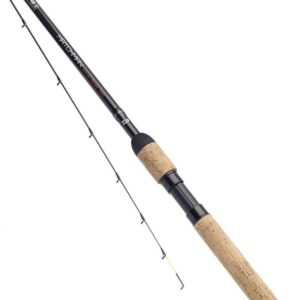
Daiwa Matchman 10ft feeder with matchman 3000 reel
£84.99 -
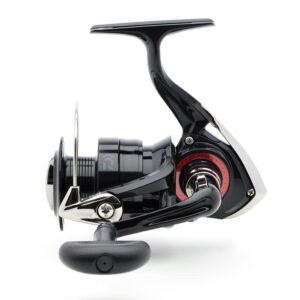
Daiwa Matchman 9ft feeder with matchman 3000 reel
£84.99 -
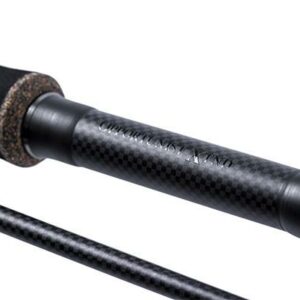
Korum Opportunist X Xtnd Rod
£67.00 -
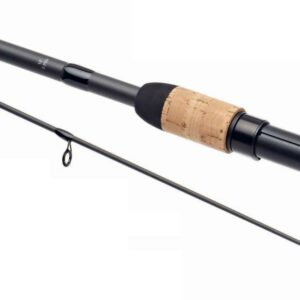
Daiwa Black Widow Barbel 12′ 2.25lb Rod
£55.99 -
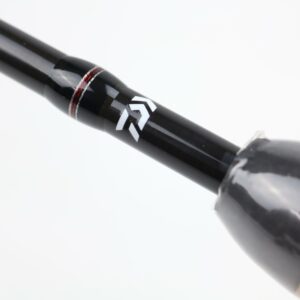
Daiwa Matchman Pellet Waggler Rods
£38.99 -
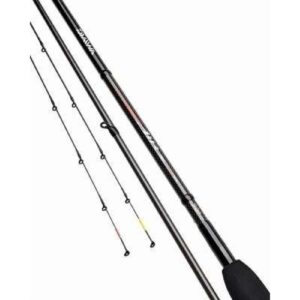
Daiwa Air Z AGS Feeder Rods
£549.99 -
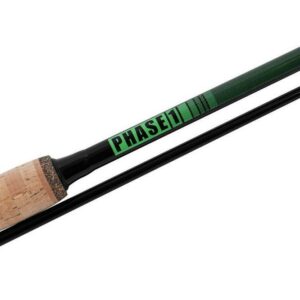
Korum Phase 1 11FT Feeder 2 Piece
£32.99 -
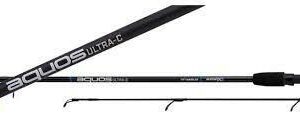
Matrix Aquos Ultra-c 9FT Feeder Rod
£49.99
Coarse fishing is a popular pastime in the UK, with many anglers targeting species such as bream, roach, and tench. To succeed in coarse fishing, it is important to have the right equipment, including a high-quality coarse fishing rod. In this article, we will take a closer look at coarse rods and their suitability for fishing in the UK.
Types of Coarse Rods
There are several types of coarse rods available, and each one has its own advantages and disadvantages. When choosing a coarse rod, it is important to consider the type of fishing you will be doing, as well as your own personal preferences.
Float Rods
Float rods are a popular choice for coarse fishing in the UK. They are designed to be used with a float, which allows the angler to present the bait at a specific depth, increasing the chances of catching fish.
Some of the key features of float rods include:
– Long length: float rods are generally long, ranging from around 10 to 16 feet in length. This gives them the extra length needed to cast long distances and to control the float at a distance.
– Sensitive tip: float rods have a sensitive tip, allowing the angler to detect even the slightest movement from the fish.
– Soft action: float rods have a soft action, which means they can bend down to the handle when a fish is hooked, reducing the chances of the fish escaping.
– Lightweight design: float rods are designed to be lightweight, which makes them easy to handle and allows the angler to fish for longer periods without getting tired.
Feeder Rods
Feeder rods are another popular option for coarse fishing in the UK. They are designed to be used with a feeder, which allows the angler to deliver bait to a specific spot on the water’s surface.
Some of the key features of feeder rods include:
– Medium length: feeder rods are generally medium in length, ranging from around 8 to 12 feet in length. This makes them versatile and suitable for a variety of different fishing situations.
– Sensitive tip: feeder rods have a sensitive tip, which allows the angler to detect even the slightest movement from the fish.
– Medium action: feeder rods have a medium action, allowing them to bend when a fish is hooked, but not so much that the angler loses control.
– Strong design: feeder rods are designed to be strong, allowing them to withstand the weight and pressure of the feeder and the fish.
Avon/Quiver Rods
Avon/Quiver rods are a versatile option for coarse fishing in the UK. They can be used with either a float or a feeder and are suitable for targeting a range of different species.
Some of the key features of Avon/Quiver rods include:
– Short length: Avon/Quiver rods are typically shorter than float rods, ranging from around 8 to 10 feet in length. This makes them suitable for fishing in narrow streams and rivers.
– Versatile design: Avon/Quiver rods can be used with both floats and feeders, making them suitable for a variety of different fishing situations.
– Sensitive tip: Avon/Quiver rods have a sensitive tip, which allows the angler to detect even the slightest movement from the fish.
– Medium action: Avon/Quiver rods have a medium action, which means they can bend when a fish is hooked, but not so much that the angler loses control.
Materials
The materials used to make coarse rods are an important consideration when choosing a rod. There are several different materials that are commonly used in rod construction, each with its own benefits and drawbacks.
Graphite
Graphite is a popular material for coarse rods, as it is lightweight, strong, and sensitive. Graphite rods are typically more expensive than other materials, but they are also more durable and long-lasting.
Fiberglass
Fiberglass is a more affordable option for coarse rods, as it is less expensive than graphite. Fiberglass rods are heavier and less sensitive than graphite, but they are also more flexible and forgiving.
Composite
Composite rods are a combination of both graphite and fiberglass, which allows for a good balance of strength, sensitivity, and flexibility. Composite rods are a good option for anglers who want the best of both worlds.
Action
The action of a rod refers to how much it bends when pressure is applied to it. There are several different types of rod action, each with its own advantages and disadvantages.
Fast action
Fast action rods are highly sensitive and responsive, making them ideal for casting and detecting bites quickly. They are also great for setting the hook in a fish’s mouth, as they allow for a quick and decisive strike.
Medium action
Medium action rods have a more flexible tip, which makes them suitable for fishing in situations where a slower, more controlled presentation is required. They are also good for fighting larger fish, as they can absorb the shock of a powerful strike.
Slow action
Slow action rods have a very flexible tip, which makes them the best choice for fishing in shallow water or when the fish are close to the surface. They are also good for fishing with live bait or slow-moving lures, as they allow for a more natural presentation.
Length
The length of a coarse rod is an important consideration when choosing a rod. The length of the rod will affect its casting distance, sensitivity, and ability to handle different fishing conditions.
Short rods
Short coarse rods, ranging from around 6 to 8 feet in length, are ideal for fishing in tight spaces, such as small streams and rivers. They are also suitable for targeting smaller fish, such as roach and perch.
Medium rods
Medium coarse rods, ranging from around 9 to 11 feet in length, are versatile and can be used to target a variety of different species. They are a good all-round option for the majority of coarse fishing.
Long rods
Long coarse rods, ranging from around 12 to 16 feet in length, are ideal for fishing in large open waters, such as lakes and reservoirs. They can cast further and allow an angler to cover more water.
Conclusion
Choosing the right coarse rod for fishing in the UK can make the difference between a successful fishing trip and a frustrating one. There are many factors to consider when choosing a rod, including the type of fishing you will be doing, the materials used, the rod action, and the length of the rod. By taking all of these factors into account, anglers can select a coarse rod that is tailored to their needs and preferences, and that will help them to catch a wide range of different species in UK waters.
100% Original product that covered warranty by the vendor.
You have the right to return your orders within 30 days.
Your orders are shipped seamlessly between countries.
Your payments are secure with our private security network.
Coarse fishing is a popular pastime in the UK, with many anglers targeting species such as bream, roach, and tench. To succeed in coarse fishing, it is important to have the right equipment, including a high-quality coarse fishing rod. In this article, we will take a closer look at coarse rods and their suitability for fishing in the UK.
Types of Coarse Rods
There are several types of coarse rods available, and each one has its own advantages and disadvantages. When choosing a coarse rod, it is important to consider the type of fishing you will be doing, as well as your own personal preferences.
Float Rods
Float rods are a popular choice for coarse fishing in the UK. They are designed to be used with a float, which allows the angler to present the bait at a specific depth, increasing the chances of catching fish.
Some of the key features of float rods include:
– Long length: float rods are generally long, ranging from around 10 to 16 feet in length. This gives them the extra length needed to cast long distances and to control the float at a distance.
– Sensitive tip: float rods have a sensitive tip, allowing the angler to detect even the slightest movement from the fish.
– Soft action: float rods have a soft action, which means they can bend down to the handle when a fish is hooked, reducing the chances of the fish escaping.
– Lightweight design: float rods are designed to be lightweight, which makes them easy to handle and allows the angler to fish for longer periods without getting tired.
Feeder Rods
Feeder rods are another popular option for coarse fishing in the UK. They are designed to be used with a feeder, which allows the angler to deliver bait to a specific spot on the water’s surface.
Some of the key features of feeder rods include:
– Medium length: feeder rods are generally medium in length, ranging from around 8 to 12 feet in length. This makes them versatile and suitable for a variety of different fishing situations.
– Sensitive tip: feeder rods have a sensitive tip, which allows the angler to detect even the slightest movement from the fish.
– Medium action: feeder rods have a medium action, allowing them to bend when a fish is hooked, but not so much that the angler loses control.
– Strong design: feeder rods are designed to be strong, allowing them to withstand the weight and pressure of the feeder and the fish.
Avon/Quiver Rods
Avon/Quiver rods are a versatile option for coarse fishing in the UK. They can be used with either a float or a feeder and are suitable for targeting a range of different species.
Some of the key features of Avon/Quiver rods include:
– Short length: Avon/Quiver rods are typically shorter than float rods, ranging from around 8 to 10 feet in length. This makes them suitable for fishing in narrow streams and rivers.
– Versatile design: Avon/Quiver rods can be used with both floats and feeders, making them suitable for a variety of different fishing situations.
– Sensitive tip: Avon/Quiver rods have a sensitive tip, which allows the angler to detect even the slightest movement from the fish.
– Medium action: Avon/Quiver rods have a medium action, which means they can bend when a fish is hooked, but not so much that the angler loses control.
Materials
The materials used to make coarse rods are an important consideration when choosing a rod. There are several different materials that are commonly used in rod construction, each with its own benefits and drawbacks.
Graphite
Graphite is a popular material for coarse rods, as it is lightweight, strong, and sensitive. Graphite rods are typically more expensive than other materials, but they are also more durable and long-lasting.
Fiberglass
Fiberglass is a more affordable option for coarse rods, as it is less expensive than graphite. Fiberglass rods are heavier and less sensitive than graphite, but they are also more flexible and forgiving.
Composite
Composite rods are a combination of both graphite and fiberglass, which allows for a good balance of strength, sensitivity, and flexibility. Composite rods are a good option for anglers who want the best of both worlds.
Action
The action of a rod refers to how much it bends when pressure is applied to it. There are several different types of rod action, each with its own advantages and disadvantages.
Fast action
Fast action rods are highly sensitive and responsive, making them ideal for casting and detecting bites quickly. They are also great for setting the hook in a fish’s mouth, as they allow for a quick and decisive strike.
Medium action
Medium action rods have a more flexible tip, which makes them suitable for fishing in situations where a slower, more controlled presentation is required. They are also good for fighting larger fish, as they can absorb the shock of a powerful strike.
Slow action
Slow action rods have a very flexible tip, which makes them the best choice for fishing in shallow water or when the fish are close to the surface. They are also good for fishing with live bait or slow-moving lures, as they allow for a more natural presentation.
Length
The length of a coarse rod is an important consideration when choosing a rod. The length of the rod will affect its casting distance, sensitivity, and ability to handle different fishing conditions.
Short rods
Short coarse rods, ranging from around 6 to 8 feet in length, are ideal for fishing in tight spaces, such as small streams and rivers. They are also suitable for targeting smaller fish, such as roach and perch.
Medium rods
Medium coarse rods, ranging from around 9 to 11 feet in length, are versatile and can be used to target a variety of different species. They are a good all-round option for the majority of coarse fishing.
Long rods
Long coarse rods, ranging from around 12 to 16 feet in length, are ideal for fishing in large open waters, such as lakes and reservoirs. They can cast further and allow an angler to cover more water.
Conclusion
Choosing the right coarse rod for fishing in the UK can make the difference between a successful fishing trip and a frustrating one. There are many factors to consider when choosing a rod, including the type of fishing you will be doing, the materials used, the rod action, and the length of the rod. By taking all of these factors into account, anglers can select a coarse rod that is tailored to their needs and preferences, and that will help them to catch a wide range of different species in UK waters.
